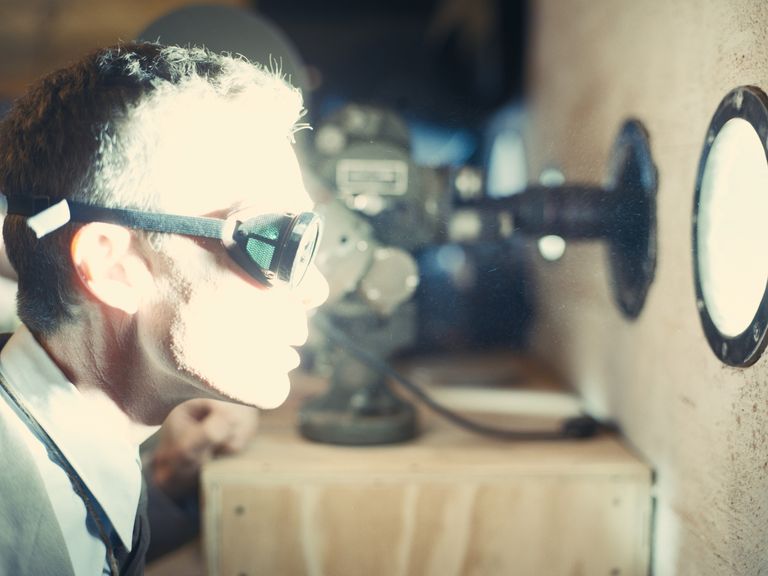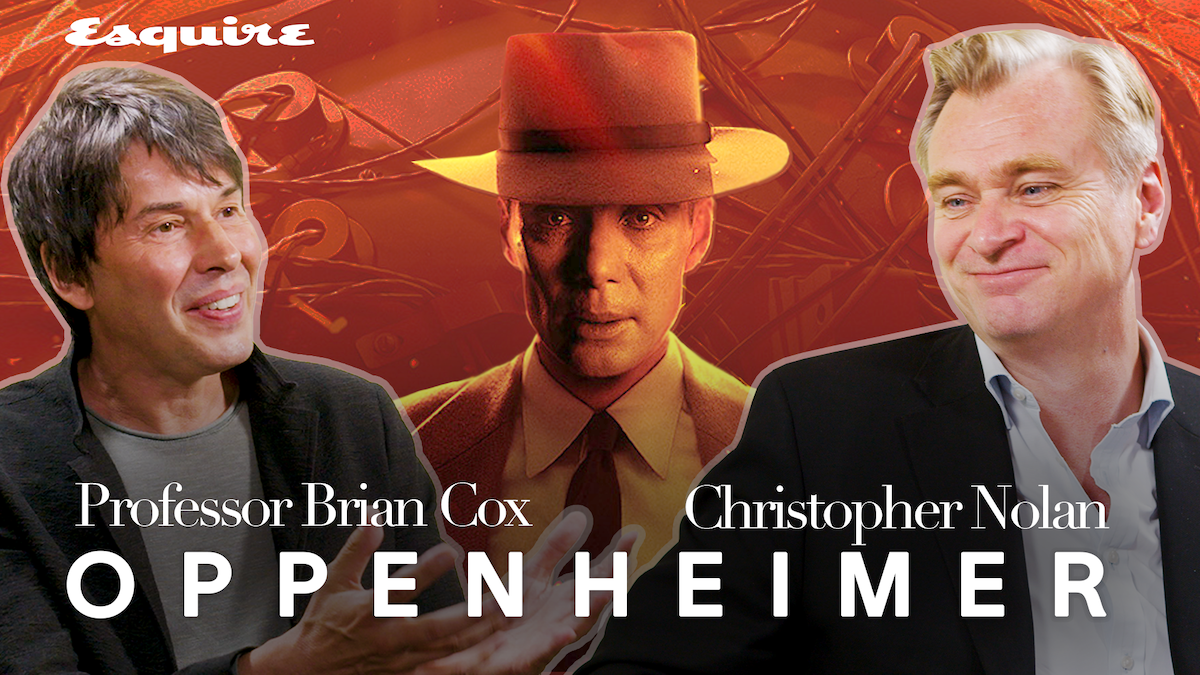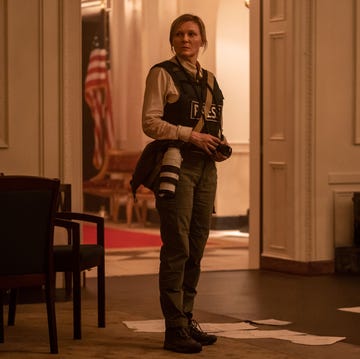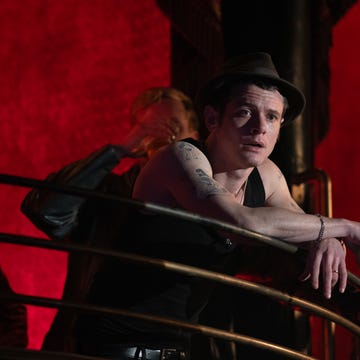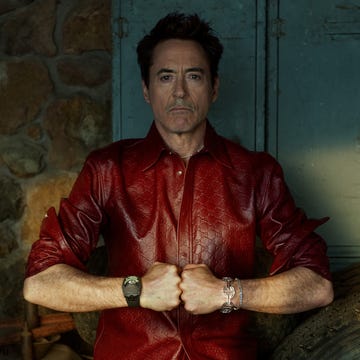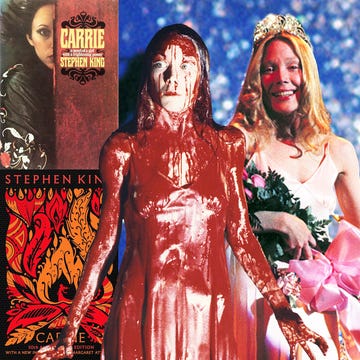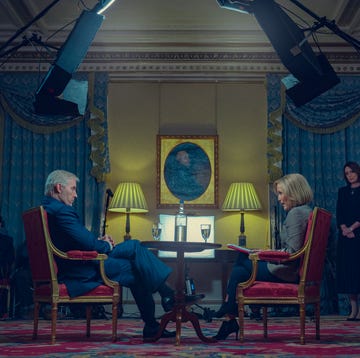Christopher Nolan spent a long time warning us about the ending of Oppenheimer. You’d be freaked out, he said. People were “absolutely devastated” by it. They couldn’t speak. It was a horror film, he said. You would know what it was like to become Death, Destroyer of Worlds. Also you might soil yourself. Enjoy!
Certainly, it’s the moment at which all the existential terror of the last three hours has been gradually building towards. We’ve seen the power of the bomb, and how it shakes Oppenheimer (played by Cillian Murphy) himself out of the intellectual bubble: splitting the atom electrified him. But at what consequence? The final few scenes are a look outwards, as the rest of the world and the whole of the future of humanity rush in.
Throughout the second half of the film Robert Downey Jr.’s Lewis Strauss has been pondering exactly what Oppenheimer said to Albert Einstein (Tom Conti) on that blustery day by the pond at Princeton to make the relativity-bothering old master blank him. But as the final few moments reveal, Strauss was nowhere in the two scientists’ thoughts: they had something bigger, something weightier, something soil-yourself-upsetting to think about.
Einstein had once been the young, reality-shaking thinker fearlessly tearing apart everything that normal people took for granted. “Now it’s your turn to deal with the consequences of your achievement,” he tells Oppenheimer. All that weight which the younger man has been carrying will stay on his back, even as the consensus starts to turn. We see Oppenheimer at the White House picking up the Enrico Fermi Prize – is it a flash forward, or a dream sequence, or a fantasy future where Oppenheimer’s guilt is gone? – where Kitty Oppenheimer still fumes at the scientists who turned on her husband. “They’ll pat you on the back, tell you all is forgiven,” Einstein says. “Just remember, it won’t be for you. It will be for them.”
Oppenheimer asks Einstein whether he recalls the two men having a conversation about whether setting off an atomic explosion could set the whole world on fire. “I believe we did,” Oppenheimer concludes.
A dreamlike sequence of images follow. From space, we see dozens of gigantic nuclear explosions across the world’s surface. The single missile which we saw Oppenheimer imagining himself looking at earlier in the movie turns out to be one of a long line of missiles, with Oppenheimer’s shadow still visible in the frame. Perhaps most hauntingly, Oppenheimer is back in the cockpit of the bomber from which David Dastmalchian’s William Borden watched a V-2 rocket fly past him en route to London, or Norwich, or Antwerp. Now there’s one missile, and another, and another, and another. We see the globe again, slowly being eaten by fire.
As Einstein and Oppenheimer talk, drops of rain ripple the pond’s surface; first a few, then dozens, then hundreds. It’s a neat visual metaphor for the threat of global nuclear war, with each raindrop falling to earth like a missile: those ripples look oddly like the blast radius circles which Strauss and his team draw onto maps of Europe and America, and like the rain there’s a feeling that the falling missiles are now unstoppable, thrown by unseen hands from unknown places.
The opening frames of the movie also set up the two narrative tracks: “fission”, which follows the young Oppenheimer through his university days and into the Manhattan Project; and the black-and-white “fusion”, which is about Strauss’ confirmation hearing. Think all the way back to the very beginning of Oppenheimer, when Einstein chucked a single pebble into the pond and we saw the young Oppenheimer’s face in close up. It was Einstein’s work which became the first fission in the chain reaction which led the young Oppenheimer to investigate relativity, nuclear physics and ultimately the splitting of the atom.
“Fission” is an apt term for Oppenheimer’s dual, paradoxical concerns: that in realising a bomb could be built, America should build it; and in building it, that America should not use it. It’s a little neat – in truth, spending $2 billion in 1945 on a bomb that wasn’t detonated was never likely to happen – but in this final scene that ‘fission’ turns to ‘fusion’ as Oppenheimer feels the two distinct tracks of his life coming together. (This is classic Nolan: sending characters back to single, definitive scenes in their lives to see them anew is a big part of Interstellar, Inception and Tenet.) Oppenheimer sees the future and the past, and feels at last the different scattered elements of his fears cohering into something complete.
“The whole film is about consequences,” Nolan told Vulture. “The delayed onset of consequences that people often forget — the film is full of different representations of that. Some visceral, some more narrative.” Oppenheimer and the Manhattan Project team may not have literally burned the oxygen in the atmosphere. But their work ignited a fire in the minds of every human being born since. Much like a fusion reaction, it’s a fire which feeds on itself, and cannot be extinguished.
Oppenheimer is in cinemas now
